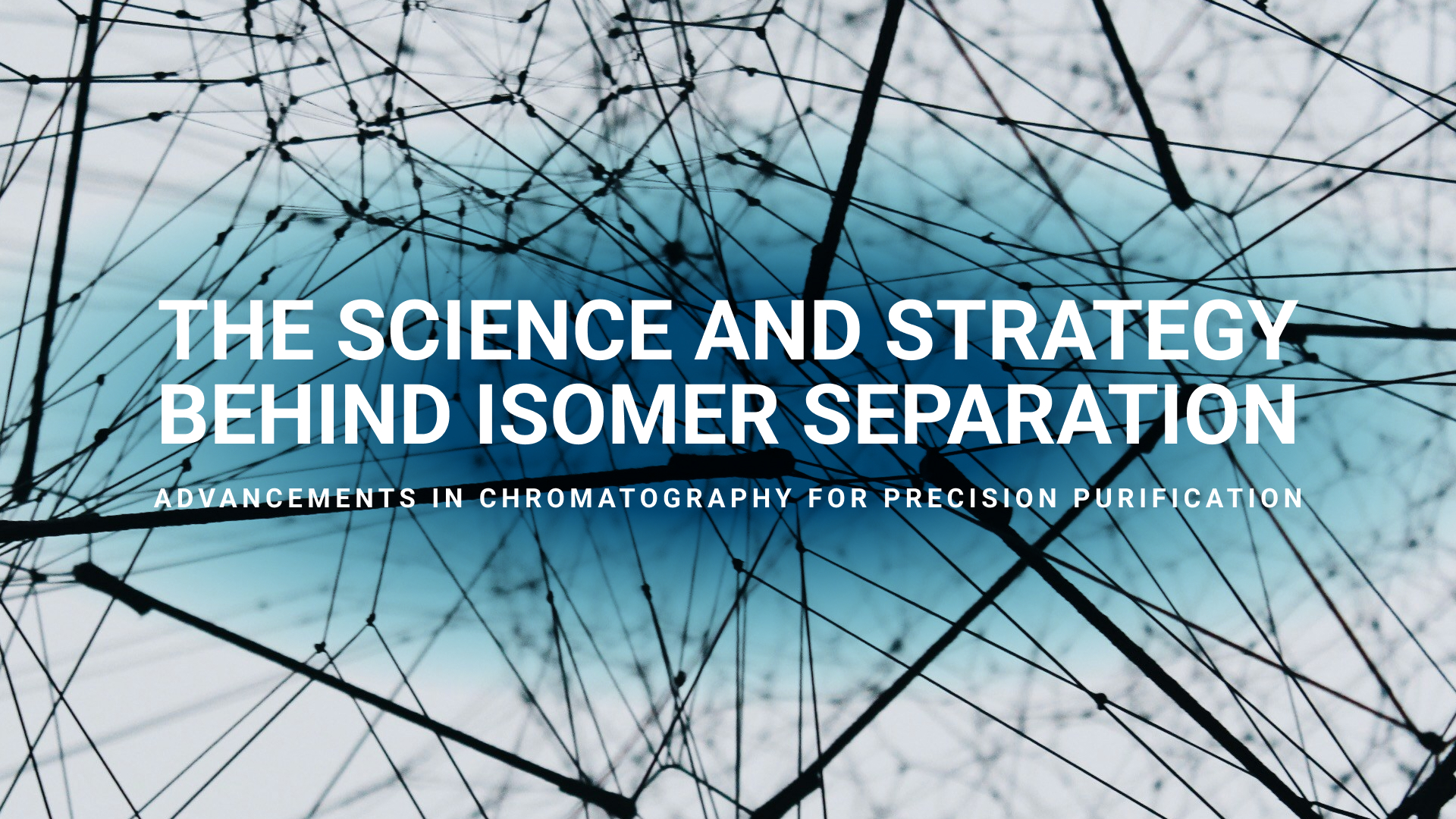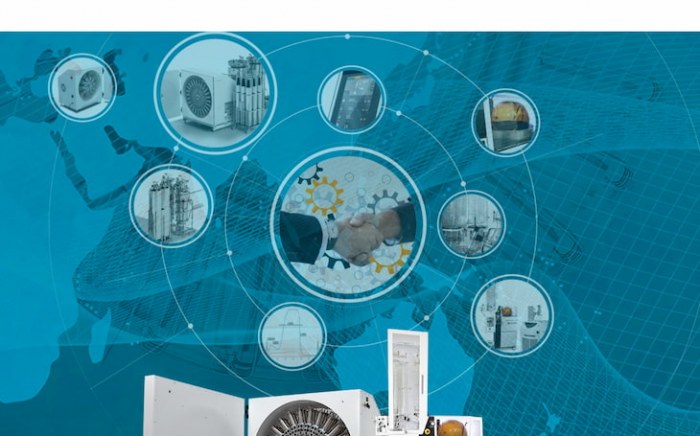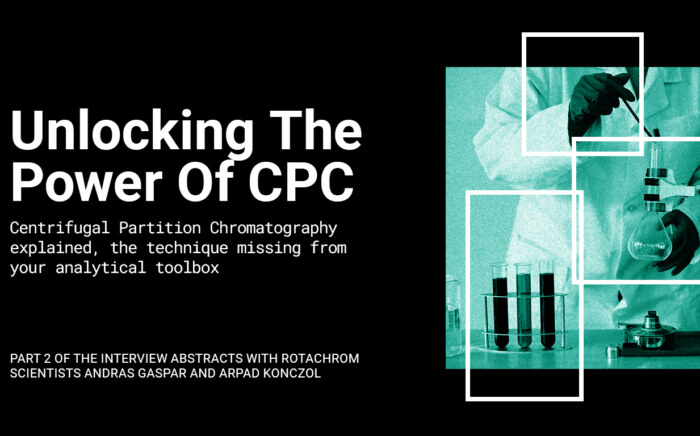Advancing Separation Science: CPC Device Installation and Its Impact
NewsIn fields like pharmaceuticals, biotechnology, and petrochemicals, the separation of isomers is crucial due to their unique properties and potential applications. Isomers—molecules with the same molecular formula but different structures—can exhibit vastly different physical, chemical, and biological behaviors, making their separation and purification an essential step in many scientific and industrial processes. This post delves into the advances in chromatography techniques for isomer separation, focusing on chiral separations and liquid-liquid chromatography, which have expanded the possibilities for isolating complex isomeric mixtures.
Why Isomer Separation Matters
Isomerism, which includes structural isomers and stereoisomers, is at the heart of many biological and chemical processes. Since even slight differences in molecular structure can lead to dramatic variations in function and interaction, isolating individual isomers is essential in producing safe and effective products. For instance, in pharmaceuticals, one isomer may be therapeutic while another could be inactive or even harmful. In food and agricultural chemistry, isomer separation can enhance the efficacy of flavor compounds or pesticides.
The specific goals of a separation process and the nature of the isomers in question guide the choice of technique. Chromatography has become an indispensable tool in isomer separation, with advancements in the last two decades that allow scientists to separate highly complex mixtures with improved precision and selectivity.
- Ligand exchange types
- Coated polysaccharides
- Immobilized proteins
- Cyclic oligosaccharides
- Cyclodextrins
- Pirkle (brush) type selectors
- Cinchona alkaloids
- Macrocyclic glycopeptides
Cyclodextrins, in particular, are widely used due to their unique cavity structure, which can form inclusion complexes with a variety of molecules. This structural feature, combined with high compatibility with various analytical techniques, makes cyclodextrins cost-effective and efficient for chiral separations. Despite substantial advancements in chiral recognition mechanisms, there is still a strong need for new chiral selectors, especially given the rapid growth of the pharmaceutical market and the emergence of complex therapeutic agents like proteins and oligonucleotides.
Liquid-Liquid Chromatography: A Modern Solution for Isomer Purification
Liquid-liquid chromatography (LLC) offers another approach to isomer separation, utilizing two immiscible liquid phases rather than a solid stationary phase. LLC techniques, including countercurrent chromatography (CCC) and centrifugal partition chromatography (CPC), are gaining popularity for preparative-scale separations across various industries. These methods are especially effective for enantioseparations, where they can handle complex mixtures and provide high-purity separations efficiently.
Both CCC and CPC rely on the partitioning of solutes between two liquid phases, enabling enantiomers to interact with a chiral selector in the liquid phase. This approach allows scientists to leverage flexible elution modes, especially in CPC, making it possible to fine-tune separation parameters for better results.
Centrifugal Partition Chromatography: Advancing LLC’s Benefits for Isomer Purification
Centrifugal partition chromatography (CPC) a liquid-liquid preparative chromatographic technique where separation takes place between two immiscible liquid solvent systems. CPC follows the principles of classical chromatography. It is a liquid-liquid preparative chromatographic technique where separation takes place between two immiscible liquid solvent systems. In CPC, these liquid phases serve as the stationary and mobile phases, with a strong centrifugal force used to immobilize the liquid stationary phase, facilitating the separation process.
As a result, there is no need for silica gel or any organic moiety bonded to a solid support in a CPC system. With the help of immobilization, CPC allows for the use of a wider range of solvents, including greener and more sustainable options, like water.
A key aspect of CPC is that a solute’s retention is determined solely by its liquid-liquid partition coefficient (Kd). The partition coefficient, or distribution coefficient, represents the solute’s relative affinity for the stationary phase, calculated as the ratio of the solute’s concentration in the stationary phase to its concentration in the mobile phase.
The separation of an injected sample in CPC is based on the different partition coefficients of its components between the mobile and stationary phases. For a specific Compound of Interest (CoI), the partition coefficient is the ratio of its concentration in the stationary phase to its concentration in the mobile phase.
In CPC, traditional chromatographic columns are replaced by cells. These CPC cells are connected in series by ducts and attached to a large rotor filled with the liquid stationary phase. A strong centrifugal force is applied to immobilize the liquid within this series of cells attached to the rotor.
The other phase in the two-phase CPC system serves as the mobile phase, which contains the sample to be purified. This mobile phase is introduced into the rotor under pressure and is pumped through the stationary phase in the form of tiny droplets. A valve allows the flow direction to be changed, enabling the CPC system to operate in either ascending mode, where the lighter phase is the mobile phase, or descending mode, where the heavier phase serves as the mobile phase.
When using the ascending mode, the mobile phase is the less dense of the two phases, causing the flow direction to move opposite to the centrifugal force. Conversely, in descending mode, the mobile phase is the denser phase.
A key advantage of CPC is its ease of scalability. CPC platforms provide linear scalability, allowing devices to be scaled up predictably from benchtop, and lab-scale instruments to large-scale, and continuous purification systems. Investing in CPC technology enables businesses to use a single purification solution for both method development and production, streamlining the process and reducing the need for multiple systems. All the following studies for the separation of different isomers which are summarized in this booklet were conducted at a request of an industrial collaborator with the objective of increasing purity or production volumes of a final single-isomer product.
Challenges and Future Directions in Isomer Separation
Despite the advancements in chromatographic techniques for isomer separation, challenges remain, particularly in the field of chiral purification. The development of new chiral selectors with improved specificity and efficiency is essential as more complex therapeutic agents enter the market. Additionally, as regulatory requirements demand higher purity levels in many industries, the need for scalable, environmentally friendly, and cost-effective separation techniques continues to grow.
Conclusion
Isomer separation is a cornerstone of modern chemistry, impacting industries from pharmaceuticals to petrochemicals. Advances in chromatography techniques, particularly in chiral and liquid-liquid chromatography, have transformed the possibilities for isolating and purifying complex isomers. In the next few blog posts, we are going to look at CPC techniques that showcase the technology’s efficacy in this complex separation field.
Read more here: https://hub.rotachrom.com/app-isomer-separation



